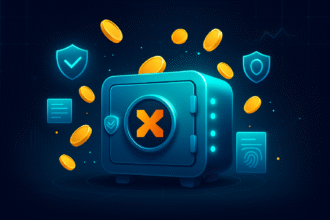With crypto, investing is one of the ways of potentially making money. In addition to this, staking is another popular method for this. If you plan to stake tokens and earn passive income, you may be wondering how you can do that on BSC, which is BNB Smart Chain. In this post, we are going to discuss the essentials of this topic.
What Is Staking, and Why Do People Do It?
Staking is sort of like earning interest, but with cryptocurrencies. Instead of just holding onto your tokens, you lock them up to support the operations of a blockchain network. This is called staking. In return, you can earn small rewards over time. As a result, staking can offer some passive income. It can be especially appealing for people who plan to keep their crypto for a while anyway.
Many people like to stake tokens because it’s seen as a more relaxed way to grow their holdings. With staking, you’re not constantly watching charts or stressing about market dips. You just lock up your tokens then wait and potentially earn some rewards along the way.
The Basics of How to Stake Tokens BSC
If you’re thinking of trying staking on BNB Smart Chain, here are the general steps you can follow. Keep in mind that the exact details can vary a bit depending on the platform or app you’re using.
1. Get Some BNB or Other Supported Tokens
First, you’ll need tokens that can actually be staked on BSC. BNB is the main one but there are others too. Make sure you’ve got them in a wallet that works with BNB Smart Chain. For example, Trust Wallet or MetaMask can be among those.
2. Choose a Staking Method
There are a couple of ways to stake on BSC. One common method is delegated staking, where you delegate your tokens to a validator. A validator is basically a network participant who helps keep things running. You don’t give them your tokens but just sort of point your support in their direction.
Another method is using something like Binance Earn, which offers flexible and fixed staking options. Some programs also offer liquid staking, which lets you keep using your staked tokens in other ways, but that’s a bit more advanced.
3. Pick a Platform or Validator
If you’re staking through Binance itself, it’s pretty straightforward. You log in, choose a staking program from their “Simple Earn” section, pick your token and duration and you’re good to go.
If you’re using a wallet or going through the BSC website, you’ll need to choose a validator. This part takes a little research. Look for one with a solid reputation and good uptime. Some people like to spread their tokens across different validators to reduce risk. But again, there’s no one-size-fits-all answer.
4. Stake Your Tokens
Once you’ve made your choice, just follow the steps to confirm the amount you want to stake and approve the transaction. Your tokens will be locked up for a period of time, depending on what you selected.
During this time, you won’t be able to sell or move your tokens freely. Because they’ll be tied up. This is something to consider before staking anything.
Are There Risks?
Yes, like many things in crypto, it’s not risk-free to stake tokens. The value of your tokens can go up or down and since they’re locked for a time, you can’t always react quickly. There’s also a small chance that the validator you choose might underperform, which can affect your rewards.
In short, don’t stake more than you’re comfortable locking away and make sure you’ve done at least a bit of research. To find more crypto news, check out ICOPAX.








